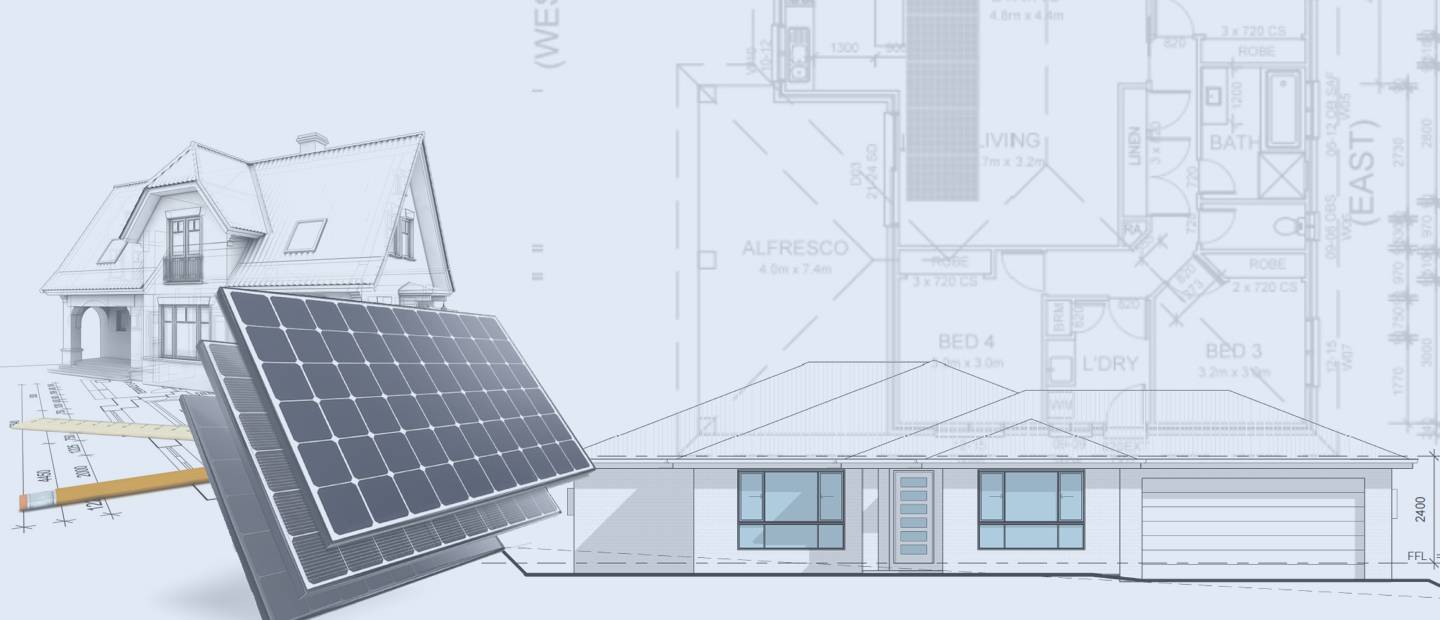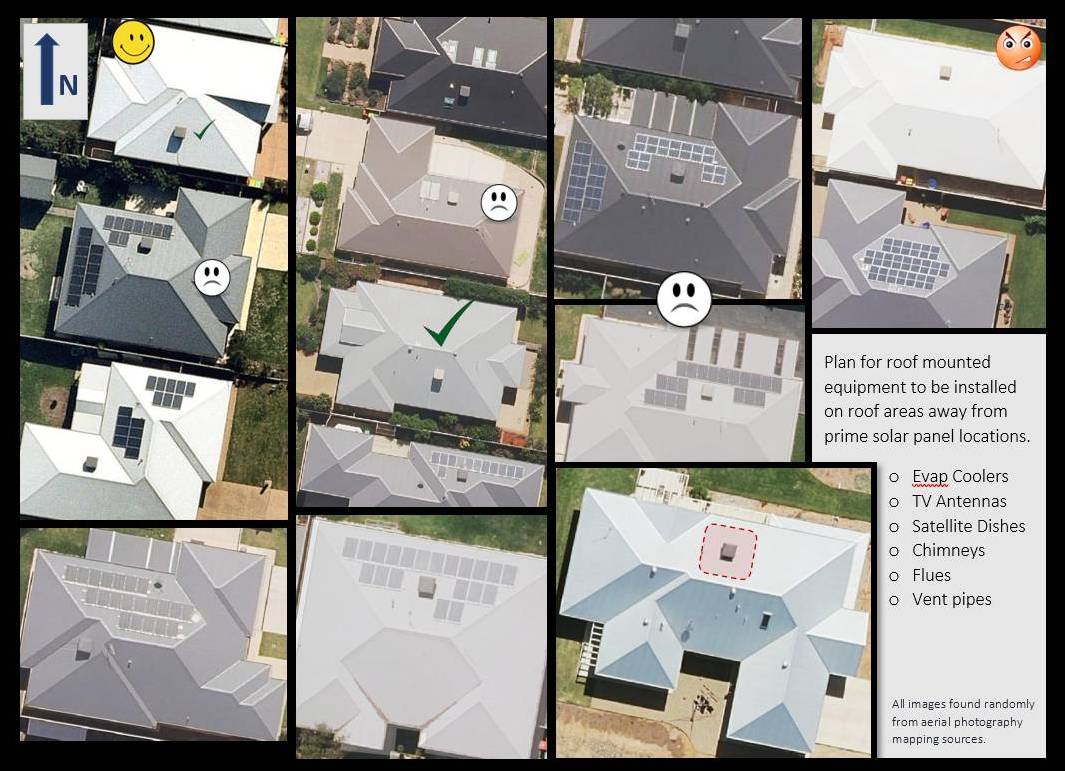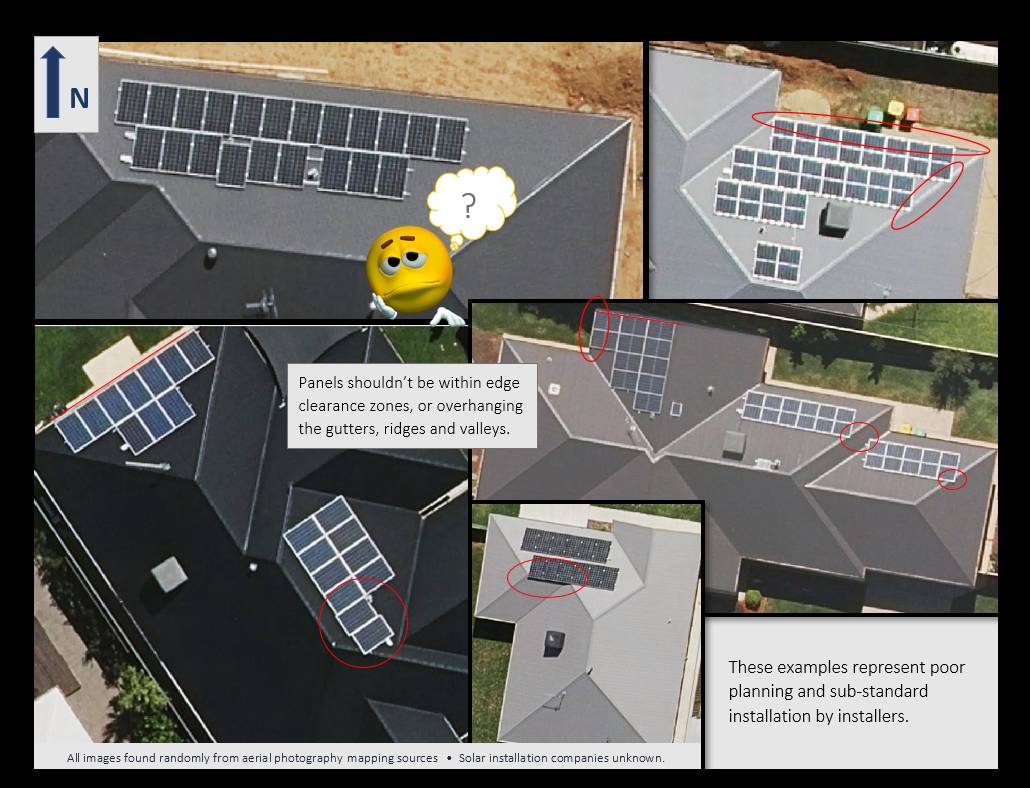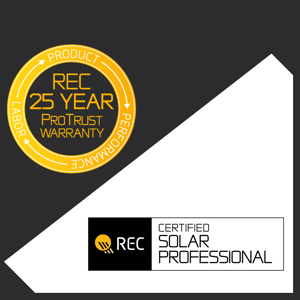Planning for Solar Power when Building a New Home
When planning the design of a new home, energy efficiency is often at the forefront of requirements. Insulation, double glazing, and efficient heating/cooling appliances are common considerations, and solar power has become a popular addition to the list recently.
Electricity or Gas?
The most common energy sources used in a home are electricity and gas.
Both require a connection to the property with an ongoing supply availability charge, regardless of the amount of energy consumed.
Gas is used for heating, cooking and hot water, all of which can be supplied by electric alternatives.
– Heating can be provided by reverse cycle air conditioning systems – with the bonus of cooling in summer.
– Modern induction cooktops and electric ovens are viable alternatives to gas.
– Heat Pumps for hot water have become a popular alternative, especially because they can be supplied with electricity produced by solar power.
Operating costs of electrical appliances can be mitigated by the installation of solar power, whereas the only way to reduce operating costs for gas is by consuming less of it, or by negotiating a cheaper price from the supplier.
So it makes sense to plan for an all-electric home, with energy-efficient appliances that can be supported by solar power.
Heat Pumps for Hot Water

Heat Pump hot water units are highly efficient electric systems that can be powered by solar.
Related reading
[articles from Renew – renew.org.au]
○ No longer cooking with gas: Induction cooktop mini guide
○ Planning ahead: Three steps to all-electric
○ Gas versus electricity: Your hip pocket guide
Induction Cooktop

What about off-grid homes?
If building a home where there is no electricity network connection currently available at the property, a stand-alone solar system with batteries and a backup generator may be installed. An off-grid power system can be more cost-effective than connecting to the network and will also have low ongoing energy costs.
In off-grid homes, you may need to consider items that help limit peak power draw and reduce energy consumption such as
• Soft start pumps.
• Heat pump hot water systems.
• Gas stove or cooktop.
Alternate heating sources like a wood fire can help reduce the electrical load in winter and thus help reduce the size and cost of the off-grid energy system and make it more cost-effective.
Build a solar passive home.
‘Passive design‘ takes advantage of the climate to maintain a comfortable temperature range in the home, reducing the energy required for heating or cooling.
SolarWise Wagga has considerable experience in off-grid energy system design for new homes, and we can work with you in the design phase to ensure you get the best outcome for your off-grid energy needs.
What size system to install?
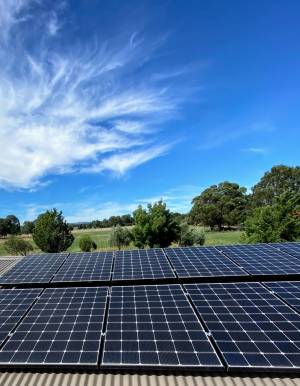 Being a new build, there is no energy usage history available to use as a guide.
Being a new build, there is no energy usage history available to use as a guide.
The current conventional wisdom is to install a system as large as you can afford – subject to available roof space.
However, the potential for grid export limitation needs to be addressed, because if you are a relatively low energy user, installing a large system with a production capacity above the grid export limit can be financially counterproductive.
Future home additions or lifestyle changes that could result in an increase in energy requirements should also be considered.
e.g. if you plan to install a spa or swimming pool, purchase an electric vehicle (EV), or if you have a growing family.
To avoid installing a system that is too large or too small for your requirements,
a logical approach is to choose a system of a nominal size that can be expanded.
A two-stage approach may also be the best solution if you want a system of high quality & performance but budget is a limiting factor.
Due to its modular design, a microinverter system will allow you to easily add extra panels at a later time if desired.
Where to install the panels?
As system size correlates to the number and size of panels, it is important to know how many can fit on the available roof space, and where they will be situated.
In the early stages of house design planning, the ideal location for solar panels should be taken into account.
A complex roof design with a lot of ridges, hips, and valleys can make the installation of panels difficult, and thus, can adversely affect system design options.
Air coolers, TV antennas, flue & vent pipes should be located away from roof areas where solar panels would be best situated.
What about electrical wiring?
Another important consideration for a new build is the size of cabling used for the electricity mains, and whether a three-phase electricity supply should be connected (if available). This is particularly important on properties where the building is situated on a large block where it might be some distance away from the connection point for power to the property.
Consideration should also be given to the installation of communication & data cables between the main switchboard, distribution board/inverter location, and internet connection point.
Plan locations for other components such as distribution boards or inverters where they will be adequately protected from direct sunlight, and don’t forget potential future additions like energy storage batteries or EV chargers.
Planning panel locations
When building plans are available showing the ridges, hips, and valleys of the intended roof design, we can upload them into our solar design software.
After scaling, we can simulate panel layouts and develop system configuration options in a solar power system proposal for your new home.
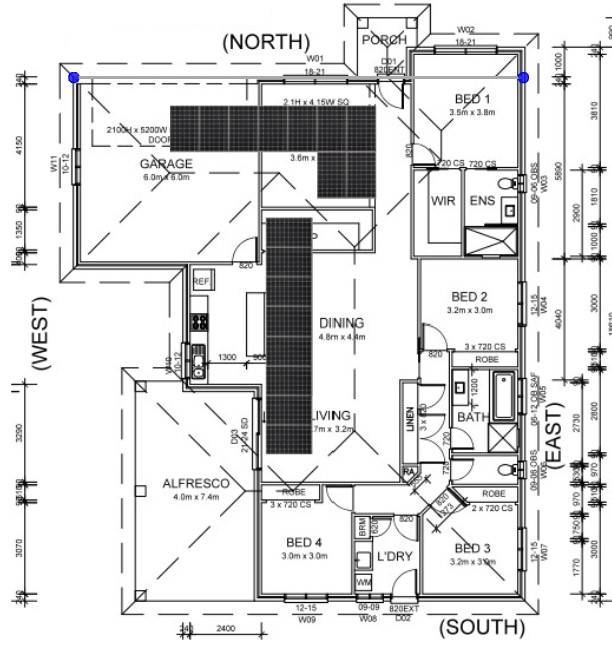
Installation Timing
One option is to wait until your new home has been completed and then install the solar power as in any other situation.
A good alternative is a 2-stage installation, where the electrical & data cabling can be pre-wired during building construction once the wall frames and roof are in place.
The mounting rails and panels can also be installed on the roof in the initial stage, although in some cases, a builder might not permit the panels to be installed until after final inspection & handover. It may also be preferred to leave the panels off until after the lock-up stage for security.
If the home is multi-storey, it is a good idea to coordinate the installation of the panels to occur while the builders scaffolding is in place, so it won’t need to be set up and paid for twice.
After the home construction is finished, the solar installer will return to finalise the installation and commission the system.
Take Home Message
Solar power system design is important.
– designing a solar friendly roof plan that allows for optimum panel location and minimal shading is a must.
The energy requirements for a new home can only be estimated.
– installing a system that is flexible and allows for expansion later is the logical approach.
Want More Information?
If you would like to know more about the information presented in this article or have questions about solar power for your new home, give us a call on 02 6971 0084 or send us a message using the enquiry form below.
Make an Enquiry
“At SolarWise Wagga our philosophy is simple, we aim to provide relevant and reliable information, quality service, and the highest grade of products at a competitive price.”

